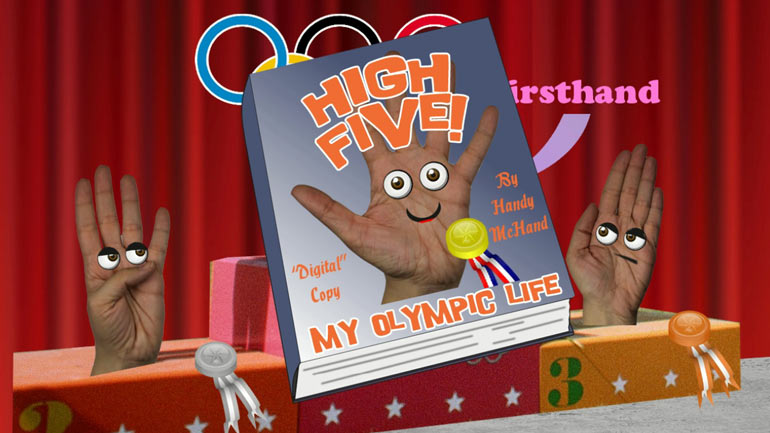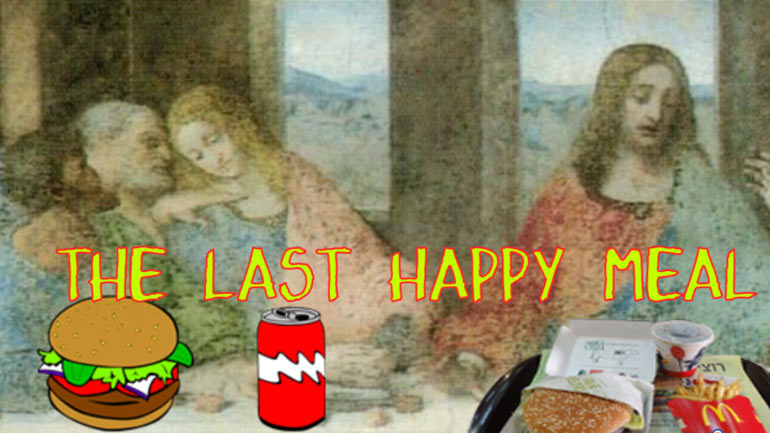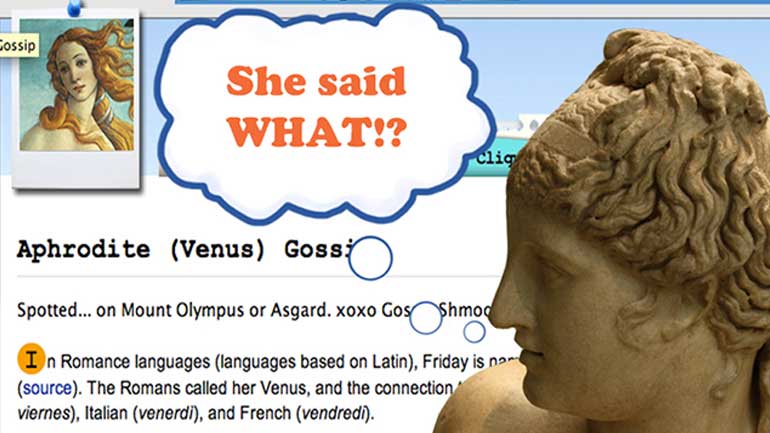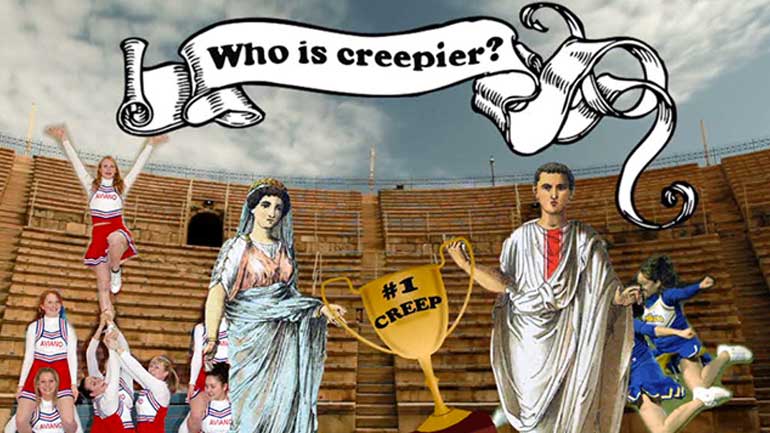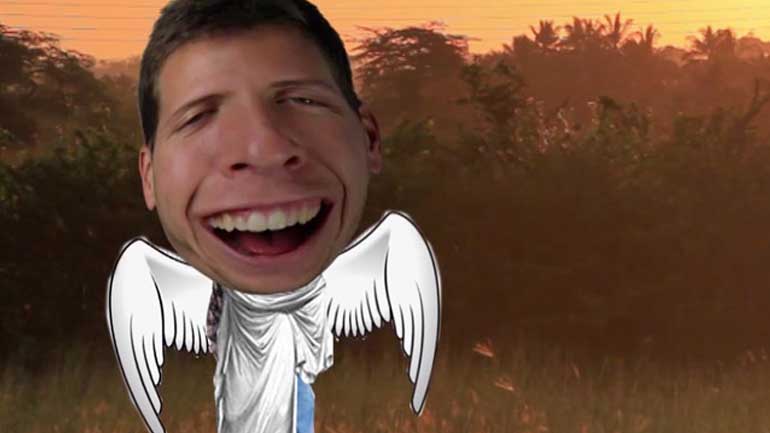ShmoopTube
Where Monty Python meets your 10th grade teacher.
Search Thousands of Shmoop Videos
Playlist Analyzing Primary Sources: Shmoopversations 5 videos
In this video, learn exactly what a primary source is and isn't.
In this video learn how to read all of those pesky primary source documents your teacher keeps making you read.
In this video, learn about reading and understanding images inside a primary document.
Analyzing Primary Sources: Looking at Objects 836 Views
Share It!
Description:
In this video learn about analyzing primary source documents that are objects.
Transcript
- 00:00
Thank you We sneak in analyzing primary sources looking at
- 00:06
objects allah shmoop an object can be anything from you
- 00:11
know a tool we find er can be a fossil
- 00:16
that's dug up it could be you know the first
- 00:20
i'm mac that was ever used So an object is
Full Transcript
- 00:24
an actual thing It's tangible You could hold it in
- 00:26
your hand Let's say you have that civil war diary
- 00:29
the words there that's the written primary source but the
- 00:32
diary itself that's the object because it's not just the
- 00:36
words in the dire that matter how was it bound
- 00:39
Didn't have a title you know how thick was it
- 00:42
Was it expensive All these kinds of things that go
- 00:45
into it objects give us so much to think about
- 00:48
and they challenge us as primary sources because instead of
- 00:51
just reading words or just you know looking at images
- 00:53
we have to think about so many different parts in
- 00:56
it So if you have a knob jet from a
- 01:00
certain time period you khun tell you know how people
- 01:03
were making their food is it You know if someone
- 01:06
found a kitchenaid today you know they would be like
- 01:10
okay They weren't doing things my hand you know if
- 01:12
we find a tool you know from who knows when
- 01:16
and you know it looks like a hammer We can
- 01:17
say oh hey look they had hammers then that even
- 01:20
even knowing that knowing that okay that means that the
- 01:23
hammer was invented after this point You can tell us
- 01:26
a lot Think about all the stuff we have got
- 01:28
our microphones are sure it's all these things it iphones
- 01:31
Exactly And you think what if someone found our object
- 01:35
but let's talk about like let's talk about the history
- 01:37
of some famous objects obviously clay pots that were stores
- 01:43
of wealth Or you read about the technology of food
- 01:47
preparation american indians thousand of years ago who had clay
- 01:52
bowls that were very sturdy and things to presumably bang
- 01:55
maize or corn into something that was edible and made
- 01:58
like a bread like substance We think if we're thinking
- 02:00
about hundreds ofyears about go we can think about thousands
- 02:03
of years ago like we have stuff from you know
- 02:06
classical period that we have like full almost intact you
- 02:09
know pots that the way that the lip of the
- 02:13
pottery was created can tell us something about how they
- 02:16
drank or you know what Their special occasions were like
- 02:19
all these so it's Not just you know ode on
- 02:21
a grecian urn it's not just like you know what
- 02:24
was painted on The outside of the pot shows us
- 02:26
what their ceremonies like actually the object itself and how
- 02:28
its shape could show us how they used it What
- 02:32
are the limitations of our vic's primary sources The number
- 02:38
one limitation is just access to them right You know
- 02:40
we have to find them dig them up We have
- 02:42
to make sure that you know that pot that we're
- 02:44
saying is from you know three hundred bc isn't you
- 02:48
know actually from eighteen right Or or from the twenty
- 02:52
first century because people don't know a lot about what
- 02:54
objects look like and it takes a a very particular
- 02:57
specialist to be able to say no that's not from
- 02:59
that time period It's easy to forge them And what
- 03:01
does that help us sew for a normal kid writing
- 03:03
a term paper needed to refer to an object And
- 03:06
they're they're making observations about the product so let's say
- 03:10
they have a pot or they have ah arrowhead or
- 03:14
something and they're actually physically able to touch it feel
- 03:16
it you know and check it out What's the difference
- 03:21
I mean if you're looking at a picture you can
- 03:22
say oh that something was painted on it or it's
- 03:25
shaped this way but let's say you get that pot
- 03:27
in your hand and when you go toe put it
- 03:29
up please don't do this in a museum But you
- 03:31
gotta put it up to your mouth and you notice
- 03:33
way this is awkward This can't be how they did
- 03:35
it then you kind of move it around and say
- 03:37
oh wait this wasn't meant for me to drink myself
- 03:41
This was meant to pour something a spittoon or to
- 03:45
use maybe too poor for someone else So maybe it
- 03:47
was made specifically for someone to use for child or
- 03:50
whatever that i'm totally making all this up But but
- 03:52
these are the things that if you aren't holding in
- 03:53
your hand you might not have the opportunity to notice
- 03:56
same with like ah hammer you know you try and
- 03:59
hit something with an old time hammer you might go
- 04:01
oh this isn't what you do with it It can't
- 04:03
possibly be But if you looked at a picture but
- 04:05
you might say oh yeah that's that's how that works
- 04:07
just because you have this idea in your head god
- 04:09
it feels like they're between actually going on that wild
- 04:12
amazon vacation versus running the video what is material history
- 04:20
What can objects tell us about history and culture What
- 04:23
are the limitations of objects And you trust that all 00:04:26.281 --> [endTime] objects are real for you
Related Videos
The gods and heroes battle it out with monsters in the best of mythology.
Today we aren't looking for the most virtuous person, or most likeable, but rather the most disturbing. Will it be Echo, the nymph who is doomed to...
This dude decapitated a creature with snakes for hair and married a beautiful maiden that he saved from a sea monster. Let's see how many of you ca...
Would you like to be immortal? We expected as much. But how about ifyou were ugly and your mother tossed you out of your home, giving you a limp fo...
